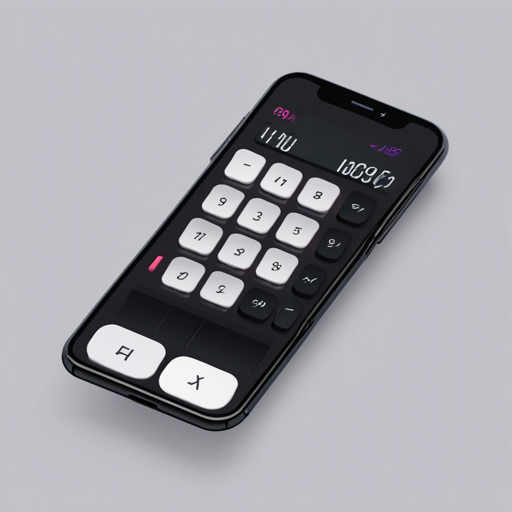Welcome to the world of coding! In this blog post, we will guide you through building a simple calculator app using HTML, CSS, and JavaScript. Not only will we create a functional calculator, but we’ll also add a sleek dark mode feature. No need to worry if you’re new to coding; we’ll take it step by step!
Getting Started
Before we dive into the code, make sure you have a text editor ready, such as VS Code or Sublime Text. You’ll be creating three files: index.html, style.css, and script.js.
Step 1: Setting Up HTML Structure
Your index.html will be the backbone of your calculator app. Here’s a simple structure:
Simple Calculator
This HTML structure sets up the basic interface of the calculator, including buttons for digits and operations.
Step 2: Styling with CSS
To make your calculator visually appealing, you’ll need to add some styles in style.css:
body {
display: flex;
justify-content: center;
align-items: center;
height: 100vh;
background-color: #f0f0f0;
}
.calculator {
background: white;
padding: 20px;
border-radius: 10px;
box-shadow: 0 0 10px rgba(0, 0, 0, 0.1);
}
#result {
width: 100%;
height: 40px;
text-align: right;
font-size: 24px;
}
.buttons {
display: grid;
grid-template-columns: repeat(4, 1fr);
}
button {
padding: 20px;
font-size: 18px;
cursor: pointer;
}
.dark-mode {
background-color: #333;
color: white;
}
This CSS provides a clean layout for the calculator and styles for the buttons and dark mode.
Step 3: Adding Functionality with JavaScript
Now, let’s add some interactivity with JavaScript in script.js:
function appendToResult(value) {
document.getElementById("result").value += value;
}
function clearResult() {
document.getElementById("result").value = '';
}
function calculateResult() {
const result = eval(document.getElementById("result").value);
document.getElementById("result").value = result;
}
The above JavaScript functions handle button clicks, clear the display, and evaluate the expression. Think of it as directing a traffic signal, where each button click is a signal that instructs the flow of calculations.
Step 4: Implementing Dark Mode
To add a dark mode, include a toggle button in your HTML and modify the JavaScript functions to switch classes:
function toggleDarkMode() {
const calculator = document.querySelector('.calculator');
calculator.classList.toggle('dark-mode');
}
This code allows users to switch between dark and light modes smoothly, enhancing usability in different lighting conditions.
Troubleshooting
If you encounter any issues while building your calculator:
- Ensure you link the CSS and JavaScript files correctly in the HTML document.
- Check your console for any syntax errors or unexpected results.
- If the dark mode doesn’t switch, verify that your JavaScript is correctly selecting the calculator element.
For more insights, updates, or to collaborate on AI development projects, stay connected with fxis.ai.
Conclusion
Congratulations! You’ve successfully created a simple calculator app with a dark mode using HTML, CSS, and JavaScript. This project not only enhances your programming skills but also allows you to dive into front-end development.
At fxis.ai, we believe that such advancements are crucial for the future of AI, as they enable more comprehensive and effective solutions. Our team is continually exploring new methodologies to push the envelope in artificial intelligence, ensuring that our clients benefit from the latest technological innovations.

